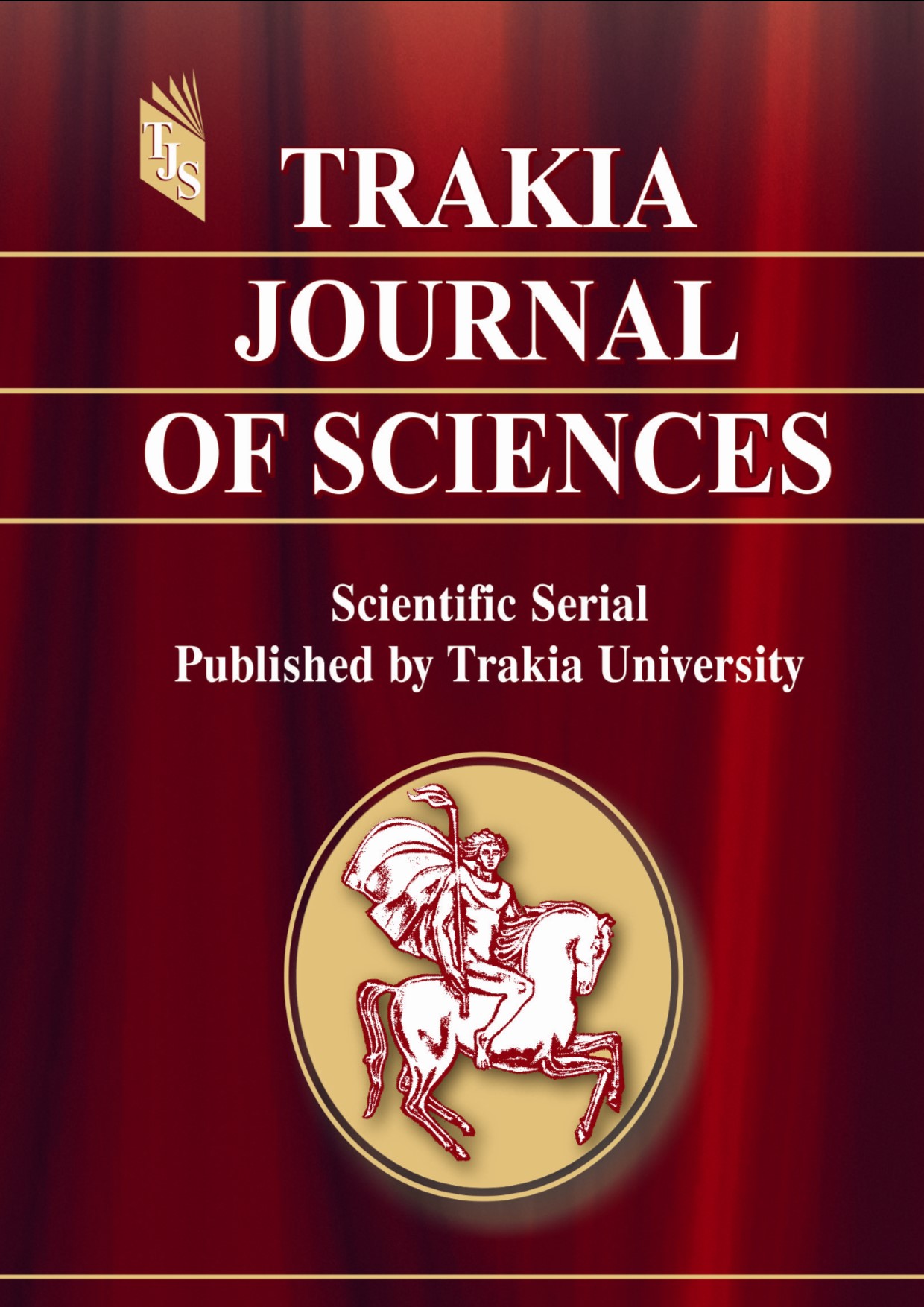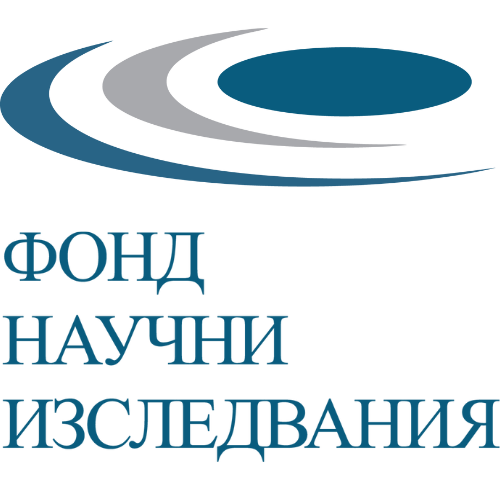INSECTS IN MONOGASTRIC NUTRITION – CHALLENGES AND FUTURE
DOI:
https://doi.org/10.15547/tjs.2024.04.005Keywords:
insect meal, monogastric animals, nutrition, productivityAbstract
The earth's population growth has stimulated the demand for animal protein for human consumption, boosting the exploitation of natural resources. In recent years, insects have been increasingly cultivated for human and animal food, emphasising the advantage of using less land and water, as well as creating lower emissions and greenhouse gases. Providing alternative protein sources in the feeding of monogastric animals is a challenge and a scientific priority for scientists. The review includes studies on insect meal (IM) addition in compound feeds and its influence on poultry and swine productivity, health and environmental effects. The questions remain open for research on the optimal level of inclusion of IM to different production categories, product quality, standardising IM rendering and production methods and the impact on the physiological and health status of animals.
References
van Huis, A. Prospects for insects as human food. J Consum Prot Food Saf 18, 105–106, 2023. https://doi.org/10.1007/s00003-023-01438-9
Jinsu Hong and Yoo Yong Kim. Insect as feed ingredients for pigs. Anim Biosci. 2022 Feb; 35(2): 347–355, 2022. doi: 10.5713/ab.21.0475
Arnold Van Huis. New Sources of Animal Proteins: Edible Insects, Woodhead Publishing Series in Food Science, Technology and Nutrition, Pages 443-461, 2017
Opoku Mensah, S., T.A.B. Akanpabadai, S.K. Diko, S.A. Okyere, and C. Benamba. Prioritisation of climate change adaptation strategies by smallholder farmers in semi-arid savannah agro-ecological zones: insights from the Talensi District, Ghana. Journal of Social and Economic Development 25: 232–258, 2023a.
Mottet A, de Haan C, Falcucci A, Tempio G, Opio C, Gerber P. Livestock: On our plates or eating at our table? A new analysis of the feed/food debate. Glob Food Sec., 14:1–8, 2017.
Schiavone, A., De Marco, M., Martinez, S., Dabbou, S., Renna, M., Madrid, J., Hernandez, F., Rotolo, L., Costa, P., Gai, F., and Gasco, L. Nutritional value of a partially defatted and a highly defatted black soldier fly larvae (Hermetia illucens L.) meal for broiler chickens: apparent nutrient digestibility, apparent metabolizable energy and apparent ileal amino acid digestibility. J.Anim. Sci. Biotechnol. 8: 51, 2017.
Sorita, M., A. Rekiel, J. Wiecek, M. Batorska, K. Puppel. Alternative Protein Sources vs. GM Soyabean Meal as Feedstuffs for Pigs- Meat Quality and Health- Promoting Indicators. Animals (Basel) 2021 Jan 13;11(1):177. doi: 10.3390/ani11010177
Wang Y.-S., and Shelomi M. Review of black soldier fly (Hermetia illucens) as animal feed and human food. Foods 10:91, 2017. doi: 10.3390/foods6100091
IPIFF, 2019 IPIFF
Van Huis A, Van Itterbeeck J, Klunder H, Mertens E, Halloran A, Muir, G, Vantomme P. Edible insects: Future prospects for food and feed security. 2013 Online: https://www.fao.org/3/i3253e/i3253e.pdf. Accessed 12 April 2023
Sogari G, Amato M, Biasato I, Chiesa S, Gasco L. The potential role of insects as feed: a multi-perspective review. Animals, 9:119, 2019.
Veldkamp T, Van Duinkerken G, Van Huis A, et al. Insects as a sustainable feed ingredient in pig and poultry diets: a feasibility study. Insecten als duurzame diervoedergrondstof in varkens-en pluimveevoeders: een haalbaarheidsstudie, (No. 638). Wageningen, The Netherlands: Wageningen UR Livestock Research, 2012.
Sheppard, D.C.; Newton, G.L.; Thompson, S.A.; Savage, S. A value-added manure management system using the black soldier fly. Bioresour. Technol. 1994, 50, 275–279.
Nguyen, T.T.X.; Tomberlin, J.K.; Vanlaerhoven, S. Influence of resources on Hermetia illucens (Diptera: Stratiomyidae) larval development. J. Med. Entomol. 2013, 50, 898–906. [Google Scholar] [CrossRef] [PubMed]
Meneguz, M.; Schiavone, A.; Gai, F.; Dama, A.; Lussiana, C.; Renna, M.; Gasco, L. Effect of rearing substrate on growth performance, waste reduction efficiency and chemical composition of black soldier fly (Hermetia illucens) larvae. J. Sci. Food Agric. 2018, 98, 5776–5784.
Salomone, R.; Saija, G.; Mondello, G.; Giannetto, A.; Fasulo, S.; Savastano, D. Environmental impact of food waste bioconversion by insects: Application of life cycle assessment to process using Hermetia illucens. J. Clean. Prod. 2017, 140, 890–905.
Chia, S.Y.; Tanga, C.M.; Osuga, I.M.; Mohamed, S.A.; Khamis, F.M.; Salifu, D.; Fiaboe, K.K.; Niassy, S.; van Loon, J.J.; Dicke, M.; et al. Effects of waste stream combinations from brewing industry on performance of black soldier fly, Hermetia illucens (Diptera: Stratiomyidae). PeerJ, 6, e5885, 2018.
Pinotti, L.; Giromini, C.; Ottoboni, M.; Tretola, M.; Marchis, D. Review: Insects and former foodstuffs for upgrading food waste biomasses/streams to feed ingredients for farm animals. Animal 2019, 13, 1365–1375.
Nguyen, T.T.; Tomberlin, J.K.; Vanlaerhoven, S. Ability of black soldier fly (Diptera: Stratiomyidae) larvae to recycle food waste. Environ. Entomol. 2015, 44, 406–410, 2015.
Zhou, F.; Tomberlin, J.K.; Zheng, L.; Yu, Z.; Zhang, J. Developmental and waste reduction plasticity of three black soldier fly strains (Diptera: Stratiomyidae) raised on different livestock manures. J. Med. Entomol., 50, 1224–1230, 2013.
DiGiacomo K and Leury. K. Review: Insect meal: a future source of protein feed for pigs? The Animal Consortium. Pages 3022-3030, 2019.
Bosch, G.; Zhang, S.; Oonincx, D.G.A.B.; Hendriks, W.H. Protein quality of insects as potential ingredients for dog and cat foods. J. Nutr. Sci., 3, e29, 2014.
Barragan-Fonseca, K.B.; Dicke, M.; van Loon, J.J.A. Nutritional value of the black soldier fly (Hermetia illucens L.) and its suitability as animal feed—A review. J. Insects Food Feed, 3, 105–120, 2017.
Newton, G.L.; Sheppard, D.C.; Watson, D.W.; Burtle, G.J.; Dove, C.R.; Tomberlin, J.K.; Thelen, E.E. The black soldier fly, Hermetia illucens, as a manure management/resource recovery tool. Symp. State Sci. Anim. Manure Waste Manag, 2005.
Dierenfeld, E.; King, J. Digestibility and mineral availability of phoenix worms, Hermetia illucens, ingested by mountain chicken frogs, Leptodactylus fallax. J. Herpetol. Med. Surg. 2008, 18, 100–105.
Finke, M.D. Complete nutrient content of four species of feeder insects. Zoo Biol. 2013, 32, 27–36, 2013.
Van Huis, A. Potential of insects as food and feed in assuring food security. Annual Review of Entomology, 58, 563–583, 2013. 10.1146/annurev-ento-120811-153704 [PubMed]
Spranghers T, Michiels J, Vrancx J, et al. Gut antimicrobial effects and nutritional value of black soldier fly (Hermetia illucens L.) prepupae for weaned piglets. Anim Feed Sci Technol, 235:33-42, 2018.
Nekrasov R, Zelenchenkova A, Chabaev M, Ivanov G, Antonov A, Pastukhova N. PSIII-37 Dried Black Soldier Fly larvae as a dietary supplement to the diet of growing pigs. J Anim Sci., 96:314, 2018.
Altmann BA, Neumann C, Rothstein S, Liebert F, Mörlein D. Do dietary soy alternatives lead to pork quality improvements or drawbacks? A look into micro-alga and insect protein in swine diets. Meat Sci 2019; 153:26-34, 2019.
Biasato I, Renna M, Gai F, Dabbou S, Meneguz M, Perona G, Martinez S, Lajusticia ACB, Bergagna S, Sardi L, et al. Partially defatted black soldier fly larva meal inclusion in piglet diets: effects on the growth performance, nutrient digestibility, blood profile, gut morphology and histological features. J Anim Sci Biotechnol. 10:12, 2019.
Kar SK, Schokker D, Harms AC, Kruijt L, Smits MA, Jansman AJM. Local intestinal microbiota response and systemic effects of feeding black soldier fly larvae to replace soybean meal in growing pigs. Sci Rep, 11:15088, 2021. https://doi.org/10.1038/ s41598-021-94604-8 35.
Crosbie, M., Zhu, C., Shoveller, A.K. and Huber, L.-A. Standardized ileal digestible amino acids and net energy contents in full fat and defatted black soldier fly larvae meals (Hermetia illucens) fed to growing pigs. Translational Animal Science 4, 2020: txaa104
Council, N.R. Nutrient Requirements of Swine; Natl Acad Press: Washington, DC, USA, (2012).
Rumpold, B. A., & Schlüter, O. Insect-based protein sources and their potential for human consumption: Nutritional composition and processing. Animal Frontiers, 5(2), 20-24, 2015.
Meyer S, Gessner DK, Braune MS, Friedhoff T, Most E, Höring M, Liebisch G, Zorn H, Eder K, Ringseis R. Comprehensive evaluation of the metabolic effects of insect meal from Tenebrio molitor L. in growing pigs by transcriptomics, metabolomics and lipidomics. J Anim Sci Biotechnol. 11:20, 2020.
Bovera F, Loponte R, Marono S, Piccolo G, Parisi G, Iaconisi V, Gasco L, Nizza A. Use of larvae meal as protein source in broiler diet: effect on growth performance, nutrient digestibility, and carcass and meat traits. J Anim Sci. 94:639–647, 2016.
Jin XH, Heo PS, Hong JS, Kim NJ, Kim YY. Supplementation of dried mealworm (Tenebrio molitor larvae) on growth performance, nutrient digestibility and blood profiles in weaning pigs. Asian-Australas J Anim Sci. 29:979–986, 2016.
Schiavone A, Dabbou S, De Marco M, Cullere M, Biasato I, Biasibetti E, Capucchio MT, Bergagna S, Dezzutto D, Meneguz M, et al. Black soldier fly larva fat inclusion in finisher broiler chicken diet as an alternative fat source. Animal. 12:2032–2039, 2018.
(AAFCO) The Association of American Feed Control Officials, (2016)
Yu M., Li Z., Chen W., Rong T., Wang G., Ma X. Hermetia illucens larvae as a potential dietary protein source altered the microbiota and modulated mucosal immune status in the colon of finishing pigs. J. Anim. Sci. Biotechnol.;10:50, 2019. doi: 10.1186/s40104-019-0358-1.
Onsongo V O, Osuga I M, Gachuiri C K, Wachira A M, Miano D M, Tanga C M, Ekesi S, Nakimbugwe D, Fiaboe K K. Insects for income generation through animal feed: effect of dietary replacement of soybean and fish meal with black soldier fly meal on broiler growth and economic performance. Journal of economic entomology, Volume 111, Article #4, 2018. https://academic.oup.com/jee/article-abstract/111/4/1966/4990642
Lalev, M., Hristakieva, P., Mincheva, N., Oblakova, M. & Ivanova, I. Insect meal as alternative protein ingredient in broiler feed. Bulg. J. Agric. Sci., 28 (4), 743–751, 2022.
Moula, N.; Detilleux, J. A meta-analysis of the effects of insects in feed on poultry growth performances. Animals. 2019, 9, 201.
Chobanova, S.; Karkelanov, N.; Mansbridge, S.C.; Whiting, I.M.; Simic, A.; Rose, S.P.; Pirgozliev, V.R. 2023. Defatted black soldier fly larvae meal as an alternative to soybean meal for broiler chickens. Poultry, 2023, 2(3), 430-441.
Hahn, T.; Roth, A.; Febel, E.; Fijalkowska, M.; Schmitt, E.; Arsiwalla, T.; Zibek, S. New methods for high‐accuracy insect chitin measurement. J. Sci. Food Agric. 2018, 98, 5069-5073.
Suzuki, M.; Fujimoto, W.; Goto, M.; Morimatsu, M.; Syuto, B.; Toshihiko, I. Cellular expression of gut chitinase mRNA in the gastrointestinal tract of mice and chickens. J. Histochem. Cytochem. 2002, 50, 1081–9.
Hossain, S.; Blair, R. Chitin utilization by broilers and its effects on body composition and blood metabolites. Br. Poult. Sci. 2007, 48, 33–38.
Ijaiya, A.T.; Eko, E.O. Effect of replacing dietary fish meal with silkworm (Anaphe infracta) caterpillar meal on performance, carcass characteristics and haematological parameters of finishing broiler chicken. Pak J Nutr. 2009, 8, 850-855.
Janssen, R.H.; Vincken, J.P.; van den Broek, L.A.; Fogliano, V.; Lakemond, C.M. Nitrogen-to-protein conversion factors for three edible insects: Tenebrio molitor, Alphitobius diaperinus, and Hermetia illucens. J. Agric. Food Chem. 2017, 65, 2275-2278.
Driemeyer, H. Evaluation of black soldier fly (Hermetia illucens) larvae as an alternative protein source in pig creep diets in relation to production, blood and manure microbiology parameters. Stellenbosch University, Stellenbosch, 2016.
Veldkamp, A.G. Vernooij. Use of insect products in pig diets, Journal of Insects as Food and Feed 7(5):1-14, 2021.
Biasato I, Ferrocino I, Colombino E, et al. Effects of dietary Hermetia illucens meal inclusion on cecal microbiota and small intestinal mucin dynamics and infiltration with immune cells of weaned piglets. J Anim Sci Biotechnol, 11:64, 2020.
Oonincx DGAB, van Itterbeeck J, Heetkamp MJW, van den Brand H, van Loon JJA, van Huis A. An Exploration on Greenhouse Gas and Ammonia Production by Insect Species
Suitable for Animal or Human Consumption. PLoS ONE 5(12): e14445, 2010.
https://doi.org/10.1371/journal.pone.0014445
Mlček J, Adámková A, Adámek M, et al. Selected aspects of edible insect rearing and consumption–A review. Czech J Food Sci, 39:149-59, 2021.
Sergiy Smetana, Anita Bhatia, Uday Batta, Nisrine Mouhrim, Alberto Tonda. Environmental impact potential of insect production chains for food and feed in Europe, Animal Frontiers, Volume 13, Issue 4, August 2023, Pages 112–120, 2023. https://doi.org/10.1093/af/vfad033

Downloads
Published
Issue
Section
License
Copyright (c) 2024 Trakia University

This work is licensed under a Creative Commons Attribution-NonCommercial 4.0 International License.


